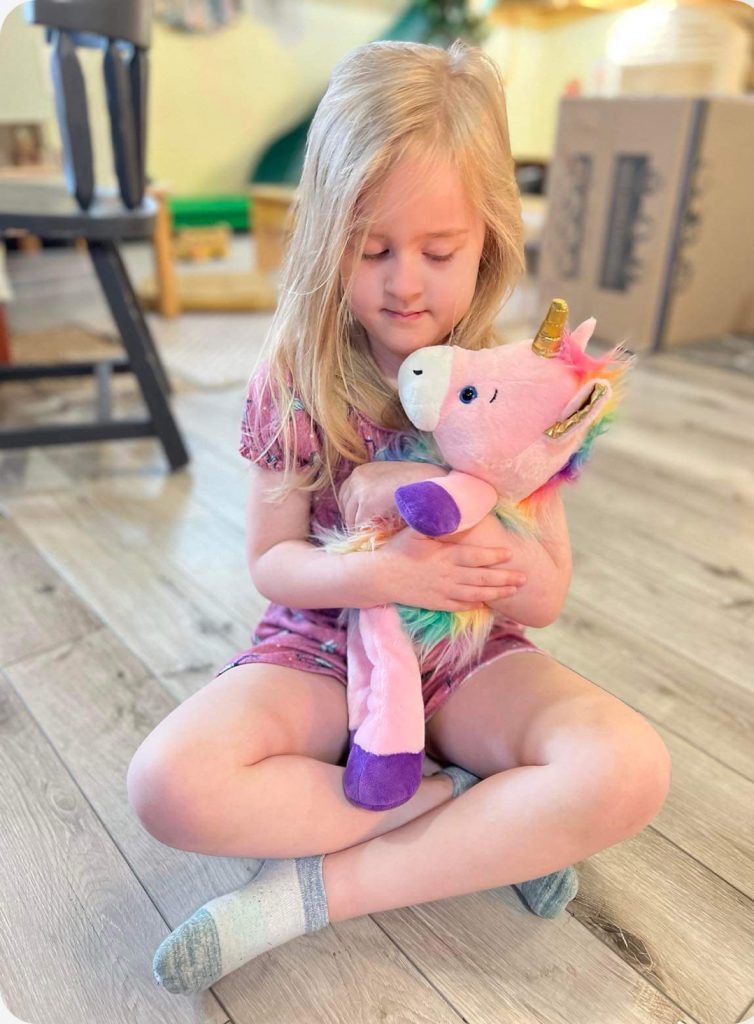As part of our social emotional learning curriculum, we read a story about a different social-emotional concept using sight, touch, and sound to engage children and solidify the skill-building process.
I always incorporate a stuffed animal that correlates to a different social or emotional need. For example, unicorns for creativity, bears for feeling love, sloths slowing down, snail feeling brave. My goal is to tell a story or read a book I find about that SEL goal and pass the stuffed animal around and help them believe in themselves and their abilities. To remind them we can get through hard times, and we don’t have to do it alone.
Daily we work on positive affirmations and the idea that their opinions about themselves matter. We’ve also talked about how to handle difficult situations and when to ask for help. Being a teacher, I’m doing everything in my power to help guide, kind, empathetic, and strong kids.
Social Emotional Learning is instilling feelings of self-worth into our kids. We use affirmations in response to many situations, like conflict-resolution needs, self-esteem needs, and emotional regulation needs to name a few. And using affirmations daily I notice the kids pulling out these types of positive sayings on their own, without my initiation.
The specific skills the children are learning include:
- Interaction — physical touch, eye contact, and playfulness
- Connection — reading positive affirmations and having them repeat them to you (if possible)
- Reflection — practicing the learned concepts and skills
As teachers we honor the emotional lives of children and enable them to find the words to express themselves as they come to terms with their complex feelings.
Calming spaces in early childhood environments are widespread but creating them with intentionality and teaching children how to use them can be big tasks. When we see disruptive behavior as a sign of a dysregulated child, and provide the tools for that child to re-regulate, we are setting them up for lifelong success as they grow to become people with strong self-regulation and impulse control skills.
These two handouts provide opportunities for you to reflect on how adults use their sensory systems to self-regulate and how to use that information to create calming spaces to support children’s social-emotional development.


